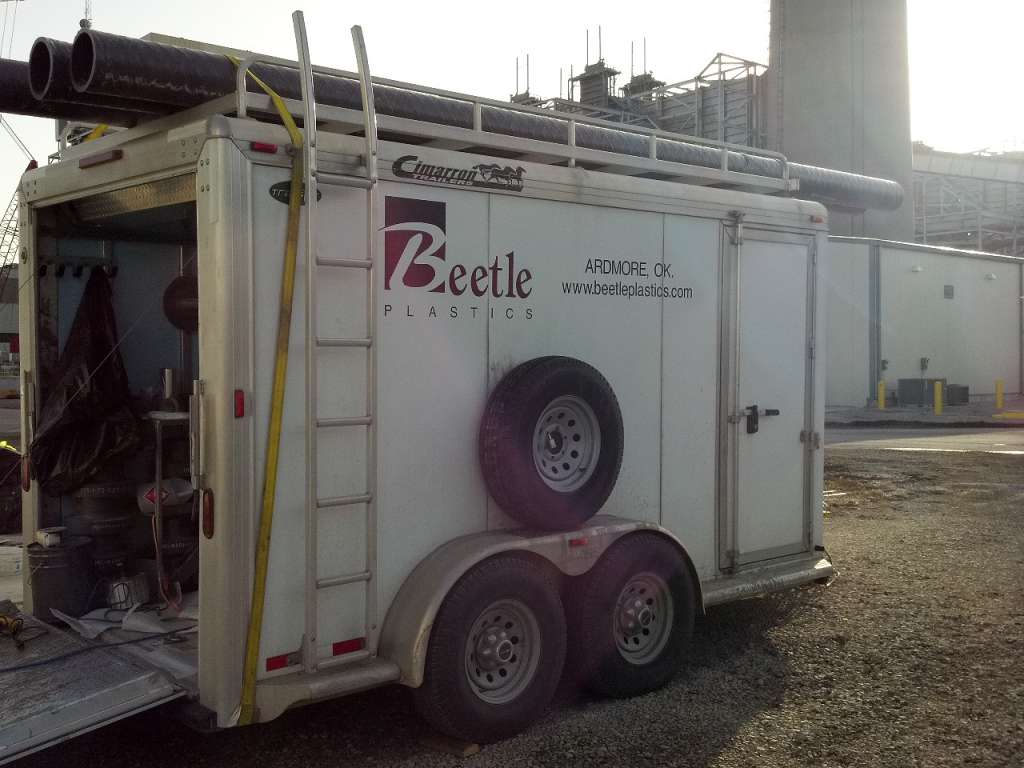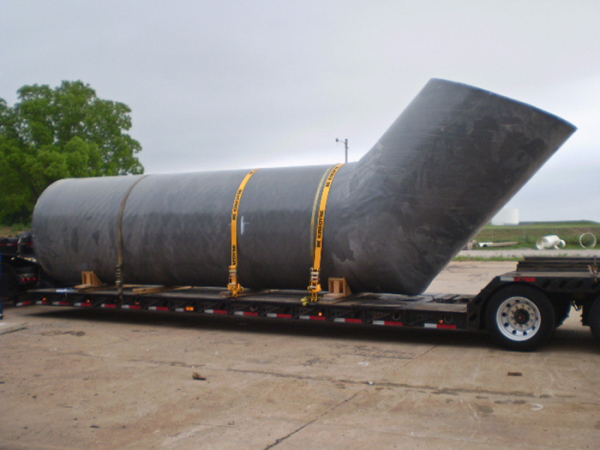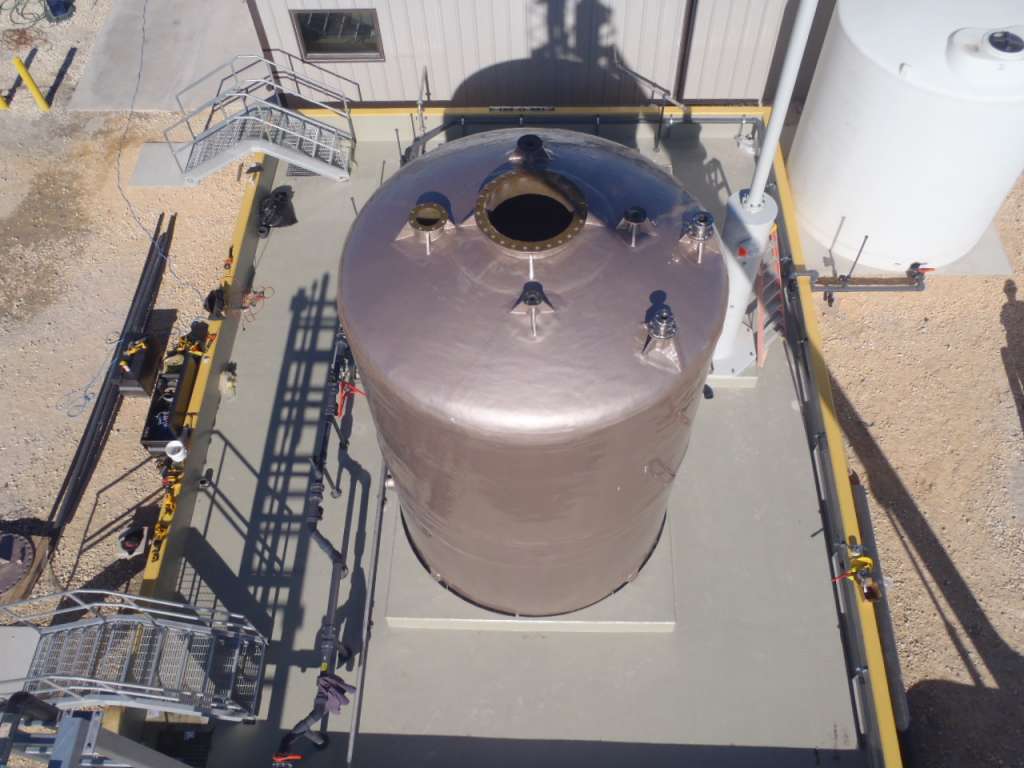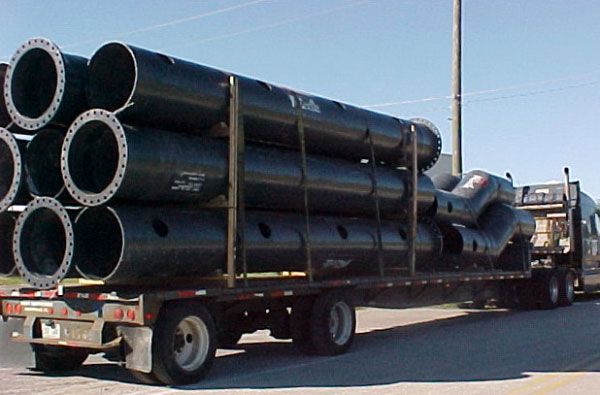Chlorine Storage and Handling Using Fiberglass Tanks and Pipe
 The corrosion and abrasion resistance of fiberglass reinforced plastics (FRP) make FRP ideal for handling caustic and abrasive manufacturing processes. The manufacturing of chlorine is one application where the benefits of FRP can make a large impact on the level of maintenance a facility will need and the overall efficiency of the process. To understand the impact FRP can have on chlorine manufacturing it is helpful to have an understanding of the process by which chlorine is produced.
The corrosion and abrasion resistance of fiberglass reinforced plastics (FRP) make FRP ideal for handling caustic and abrasive manufacturing processes. The manufacturing of chlorine is one application where the benefits of FRP can make a large impact on the level of maintenance a facility will need and the overall efficiency of the process. To understand the impact FRP can have on chlorine manufacturing it is helpful to have an understanding of the process by which chlorine is produced.
Manufacturing Chlorine
Chlorine can be manufactured by the electrolysis of a sodium chloride solution or a potassium chloride solution. In the former, caustic soda (sodium hydroxide) and hydrogen gas are two co-products created as a result. In the latter, caustic potash (potassium hydroxide) and hydrogen gas are two co-products created.
Because hydrogen is by-product of the electrolysis process, cost-effective considerations must be given to how it is properly and cost-effectively handled. There are some common industrial approaches to this: hydrogen produced may be vented unprocessed directly to the atmosphere or cooled, compressed and dried for use in other processes on site or sold to a customer via pipeline, cylinders or trucks. Furthermore, some possible uses include the manufacture of hydrochloric acid or hydrogen peroxide, as well as desulphurization of petroleum oils, or use as a fuel in boilers or fuel cells.
Because the hydrogen gas must be cooled, condensation and moisture are always issues in this industry. Cooling is imperative, as it improves the efficiency of both the compression and the liquefaction stage that follows. Chlorine exiting is ideally between 18°C and 25°C. After cooling the gas stream passes through a series of towers with counter flowing sulfuric acid. These towers progressively remove any remaining moisture from the chlorine gas. After exiting the drying towers the chlorine is filtered to remove any remaining sulfuric acid.
The Role of FRP
Chlorine gas exiting the cell line must be cooled and dried since the exit gas can be over 80°C and contains moisture that allows chlorine gas to be corrosive to iron piping. FRP pipe, ductwork, tanks and other custom products can be created to be corrosion and abrasion resistant, making it ideal for handling the gas.
Chlorine gas must also be compressed and liquefied during the manufacturing of chlorine. Methods of compression include liquid ring, reciprocating, or centrifugal. After compression, chlorine gas flows to the liquefiers, where it is cooled enough to liquefy. Non condensable gases and remaining chlorine gas are vented off as part of the pressure control of the liquefaction systems. These gases are routed to a gas scrubber. These vented off gases can cause corrosion and decrease plant efficiency. FRP chlorine gas scrubbers, towers stacks/shroud, fan casing, and inlet bell can also be utilized in plant design to leverage FRP’s corrosion and abrasion resistance to successfully increase plant efficiency and reduce maintenance.
FRP products are ideal for cooling and storage applications during the compression and liquefaction stages of chlorine gas production. Custom FRP components such as walkways, decking, bridges, stairs, and railings can further enhance structure, functionality and over-all durability of the plant.


 After some time in operation, it was determined that there were areas of “high wear” in one of the 8 inch
After some time in operation, it was determined that there were areas of “high wear” in one of the 8 inch  The
The 


 In the
In the  Now that we have covered
Now that we have covered 



